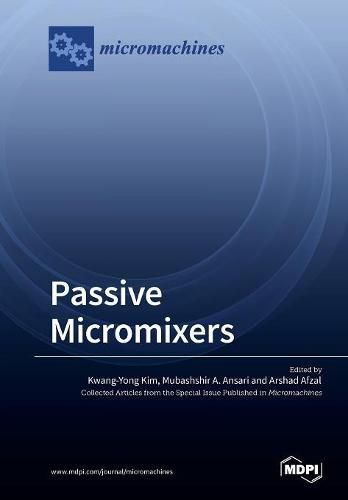Readings Newsletter
Become a Readings Member to make your shopping experience even easier.
Sign in or sign up for free!
You’re not far away from qualifying for FREE standard shipping within Australia
You’ve qualified for FREE standard shipping within Australia
The cart is loading…






This title is printed to order. This book may have been self-published. If so, we cannot guarantee the quality of the content. In the main most books will have gone through the editing process however some may not. We therefore suggest that you be aware of this before ordering this book. If in doubt check either the author or publisher’s details as we are unable to accept any returns unless they are faulty. Please contact us if you have any questions.
Micro-total analysis systems and lab-on-a-chip platforms are widely used for sample preparation and analysis, drug delivery, and biological and chemical syntheses. A micromixer is an important component in these applications. Rapid and efficient mixing is a challenging task in the design and development of micromixers. The flow in micromixers is laminar, and, thus, the mixing is primarily dominated by diffusion. Recently, diverse techniques have been developed to promote mixing by enlarging the interfacial area between the fluids or by increasing the residential time of fluids in the micromixer. Based on their mixing mechanism, micromixers are classified into two types: active and passive. Passive micromixers are easy to fabricate and generally use geometry modification to cause chaotic advection or lamination to promote the mixing of the fluid samples, unlike active micromixers, which use moving parts or some external agitation/energy for the mixing. Many researchers have studied various geometries to design efficient passive micromixers. Recently, numerical optimization techniques based on computational fluid dynamic analysis have been proven to be efficient tools in the design of micromixers. The current Special Issue covers new mechanisms, design, numerical and/or experimental mixing analysis, and design optimization of various passive micromixers.
$9.00 standard shipping within Australia
FREE standard shipping within Australia for orders over $100.00
Express & International shipping calculated at checkout
This title is printed to order. This book may have been self-published. If so, we cannot guarantee the quality of the content. In the main most books will have gone through the editing process however some may not. We therefore suggest that you be aware of this before ordering this book. If in doubt check either the author or publisher’s details as we are unable to accept any returns unless they are faulty. Please contact us if you have any questions.
Micro-total analysis systems and lab-on-a-chip platforms are widely used for sample preparation and analysis, drug delivery, and biological and chemical syntheses. A micromixer is an important component in these applications. Rapid and efficient mixing is a challenging task in the design and development of micromixers. The flow in micromixers is laminar, and, thus, the mixing is primarily dominated by diffusion. Recently, diverse techniques have been developed to promote mixing by enlarging the interfacial area between the fluids or by increasing the residential time of fluids in the micromixer. Based on their mixing mechanism, micromixers are classified into two types: active and passive. Passive micromixers are easy to fabricate and generally use geometry modification to cause chaotic advection or lamination to promote the mixing of the fluid samples, unlike active micromixers, which use moving parts or some external agitation/energy for the mixing. Many researchers have studied various geometries to design efficient passive micromixers. Recently, numerical optimization techniques based on computational fluid dynamic analysis have been proven to be efficient tools in the design of micromixers. The current Special Issue covers new mechanisms, design, numerical and/or experimental mixing analysis, and design optimization of various passive micromixers.